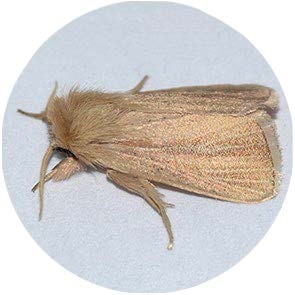


| Latin Name | Sesamia inferens |
| Common Name | Pink rice stem borer |
| Biology | Adults are nocturnal, exhibit phototaxis, and prefer to lay eggs on tall, dense vegetation. Larvae bore into the stems of rice, corn, and other crops: newly hatched larvae cluster inside leaf sheaths to feed, forming "dead sheaths," while older larvae later bore into stems, causing "dead hearts" and "white panicles." This pest is relatively cold-tolerant, with 3-4 generations per year in the Yangtze River Basin and southern regions, and thrives in humid environments. |
| Damage | This pest primarily damages Poaceae crops such as rice, corn, and sorghum, and can also harm sugarcane and reeds. |
| Distribution Regions | China and South Asia |
| Monitoring | Pheromone lures mimic natural sex pheromones to attract male insects into specialized traps for population monitoring and suppression. As a core IPM component, monitoring enables early risk detection and targeted control. Mass trapping reduces mating opportunities to curb offspring populations. Protocols: ●Use only with matched traps. ●15-45 traps/hectare,replace/replenish every 4-6 weeks. ●Wear gloves or wash hands with detergent when switching lure types. ●Refer to trap-specific hanging instructions. |
| Recommended Traps | Delta Trap, Wing Trap |

ご連絡先情報をご提供ください。精密にマッチしたフェロモンソリューションをご提供します。当社の既存ポートフォリオに最適なソリューションが見つからない場合、合成化学チームが分子構造設計から量産まで一貫してカスタム開発を実施いたします。